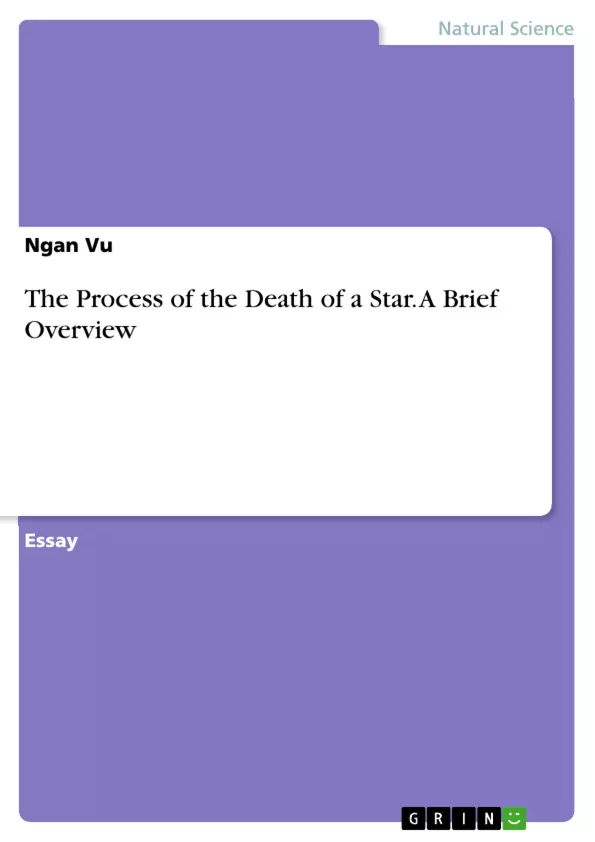The paper gives a brief overview of the process of a star’s death. After billions of years since the birth of a star, there comes its death. No star can eternally burn as they will eventually run out of hydrogen fuel.
Table of Contents
- The Death of Stars
- The Death of Low-Mass Stars
- The Death of Massive Stars
- Supernovae and its Legacy
Objectives and Key Themes
This document explores the different ways stars die, focusing on the distinct processes experienced by low-mass and massive stars. It emphasizes the dramatic and powerful nature of stellar death, highlighting the creation of new elements and the contribution of these elements to the formation of planets and life itself.
- The lifecycle of stars and their inevitable death
- The distinct processes of death for low-mass and massive stars
- The role of nuclear fusion in the evolution and death of stars
- The creation of heavy elements during stellar death, particularly through supernovae
- The impact of stellar death on the universe and the formation of new stars, planets, and life
Chapter Summaries
- The Death of Low-Mass Stars: This chapter outlines the death process of stars with a mass similar to our Sun. It covers the expansion of the star into a red giant, the triple-alpha process in the core, the formation of carbon and oxygen, and the eventual collapse into a white dwarf.
- The Death of Massive Stars: This chapter focuses on the death of massive stars, highlighting their rapid evolution and the formation of heavier elements through fusion. It details the core's collapse due to the exhaustion of nuclear fuel and the formation of iron, which triggers a catastrophic supernova explosion.
- Supernovae and its Legacy: This chapter explains the powerful supernova explosion and its role in enriching the universe with heavy elements. It discusses the formation of neutron stars and black holes, the role of neutrinos in the explosion, and the eventual dispersion of elements into space.
Keywords
Key topics explored in this text include stellar evolution, star death, nuclear fusion, supernovae, neutron stars, black holes, heavy elements, cosmic rays, and the role of stellar death in the formation of new stars and planets.
- Quote paper
- Ngan Vu (Author), 2020, The Process of the Death of a Star. A Brief Overview, Munich, GRIN Verlag, https://www.grin.com/document/1168001



